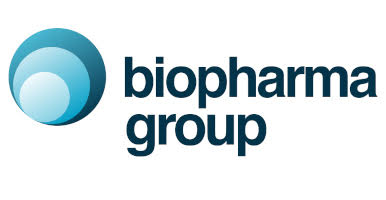Spray drying versus freeze drying
Recent research suggests that spray drying could be a viable option for complex products such as microencapsulated bacteria and nanoparticulates, says Biopharma Group
Freeze drying is the preferred choice for preserving a wide range of pharmaceutical formulations when stability in the liquid state is inadequate, storage requirements are too stringent, or a solid form of the product is desired. However, recent research has transformed spray drying from being thought of as a process only suitable for food and robust bulk pharmaceutical applications into a viable option for complex products such as microencapsulated bacteria and nanoparticulates.
Spray drying is a higher throughput process that is simpler, scalable, and can produce powders suitable for processing into tablets/capsules without secondary processing
In contrast to lyophilisation, spray drying is a higher throughput process that is simpler, scalable, and can produce powders suitable for processing into tablets/capsules without milling or other secondary processing. However, the high processing temperatures and high shear forces involved can easily damage active ingredients. Additional factors to consider include a higher level of losses than freeze drying, often a generally lower quality in characteristics such as taste, smell, activity, water content and/or stability, and the method cannot prepare product directly in vials or plates.
An area where spray drying shows particular promise is in particle coatings. It is possible to prepare particles of a formulation coated with a protective layer of a chosen composition to achieve a specific behaviour. Enteric coatings are used in pharmaceuticals to deliver oral doses of drugs to the gut for absorption into the bloodstream, which often requires a way of preventing API degradation due to the strongly acidic conditions in the stomach. This coating technique has been used in a similar way with spray drying to produce a powdered form of beneficial gut bacteria, and deliver them to the intestines. Without the enteric coating, the bacteria would be destroyed in the stomach. This protective coating technique is something that is difficult to achieve using freeze drying.
An area where spray drying shows particular promise is in particle coatings
Spray drying is also often specifically sought for inhalants. These are usually used in the form of dry powders, whether transferred with a carrier solvent or a blister pouch; these dosage forms are suited to the spray drying process.
Spray drying is usually lower cost than freeze drying, but this is not always the case for more complicated formulations; for example products that require multiple protective coating layers will need to undergo multiple coating processes, which can increase costs. In some cases the multi-stage processing required to prepare spray dried coated particles can become very time consuming and expensive, making a simpler formulation that is freeze dried a more cost-effective solution.
Freeze drying is particularly well suited to processing temperature sensitive and delicate materials. Its strengths include a low processing temperatures, higher yield, greater product uniformity and often higher quality in terms of activity, water content and/or stability. The product temperature will be below 0°C during primary drying and typically below 30°C during secondary drying, compared with product temperatures usually above 80°C in spray drying. However, these benefits come with an increased processing time, and a higher price.
Freeze drying is particularly well suited to processing temperature sensitive and delicate materials
Because freeze drying is typically performed with product directly filled in vials or other containers, this processing method is best suited for formulations that do not require further processing after drying. Vials can be sealed in the dryer, avoiding potential contamination once the cycle is complete. Spray drying is a bulk drying process so is unlikely to be suited for products that would require dispensing into vials after drying because the introduction of this extra handling step will have cost, quality and accuracy implications. Powder filling is not as accurate as dispensing liquid into vials. Additionally, powder filling cannot be used to dispense very small amounts of powder, whereas liquid filling is possible at microlitre volumes at production scale.
Biopharma Technology is equipped with both freeze drying and spray drying capabilities at laboratory scale, so can perform comparisons between the two drying technologies for your product, allowing for an informed decision over which drying method is best suited. Biopharma Technology has carried out a research project comparing the viability of probiotic bacteria when freeze dried or spray dried with a protective coating, and demonstrated the potential that spray drying has for preparing microencapsulated bacteria that can be dispersed within a drink, for example. Many years of freeze drying research and development provides Biopharma Technology with expertise in a wide range of dried products enabling us to provide advice on which method is best suited to your requirements.

